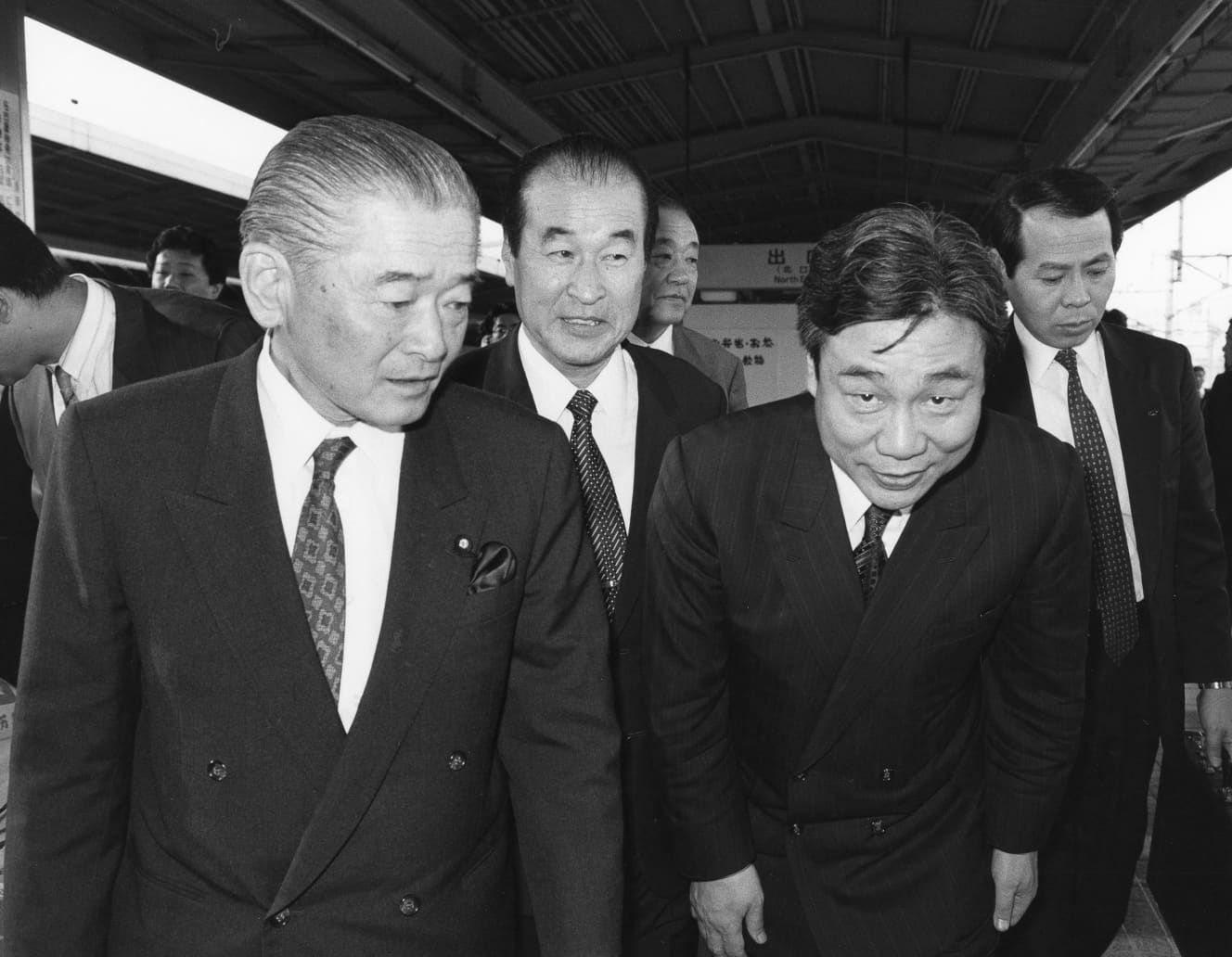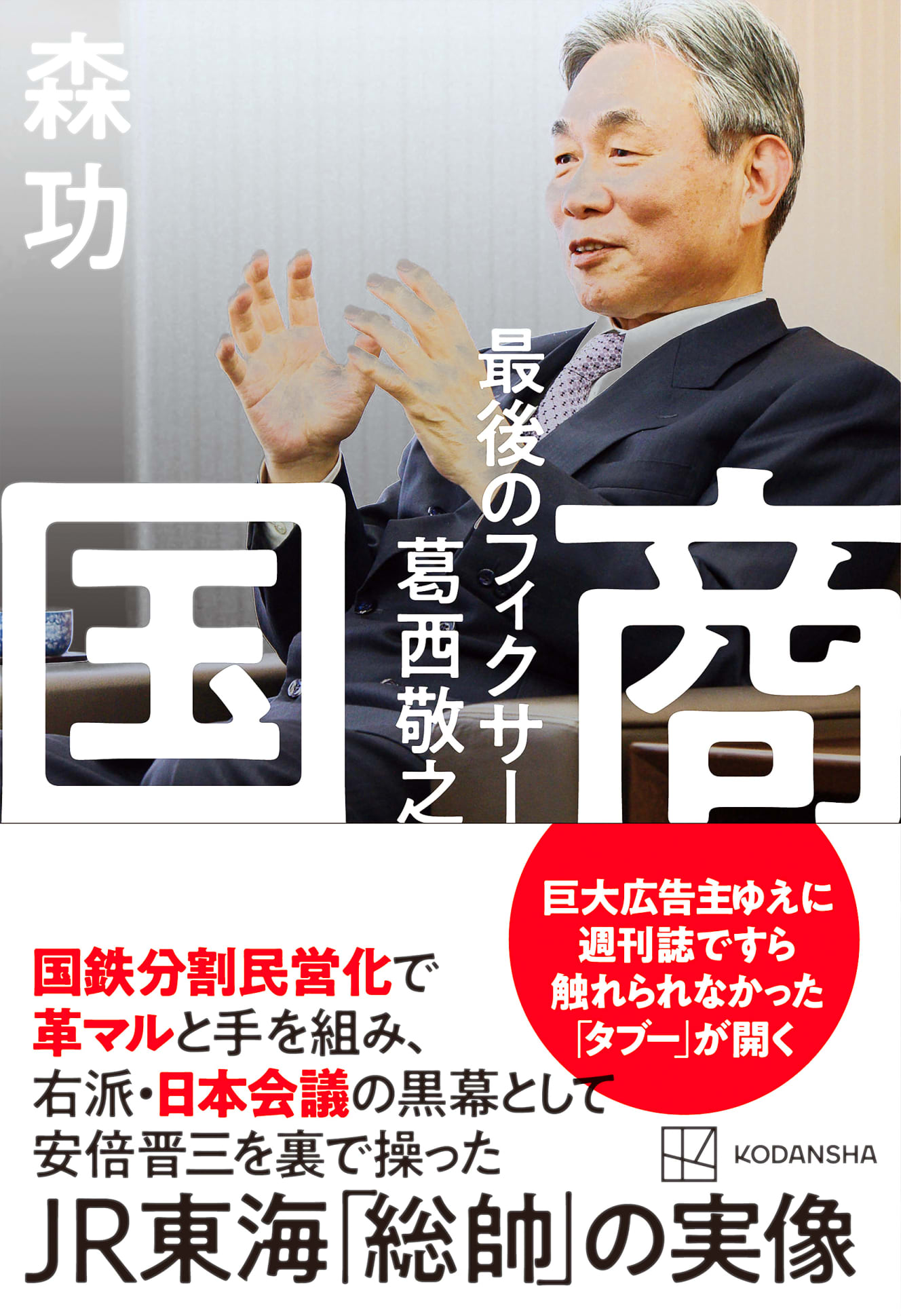Yoshiyuki Kasai: How the Man Who Reformed Japan National Railways Became a “National Merchant
Former Honorary Chairman of Tokai Railway Company Former Honorary Chairman of Tokai Railway Company Former Honorary Chairman of Tokai Railway Company Former Honorary Chairman of Tokai Railway Company Former Honorary Chairman of Tokai Railway Company Former Honorary Chairman of Tokai Railway Company Former Honorary Chairman of Tokai Railway Company Former Honorary Chairman of Tokai Railway Company

In May of this year, a man passed away. He was called “the last fixer,” former Honorary Chairman of Central Japan Railway Company (JR Tokai), Takayuki Kasai. The book describes his footsteps, his interactions with politicians, and everything about him. The book, “Kokusho: The Last Fixer, Takayuki Kasai,” is a nonfiction work that depicts his entire life, including his footsteps and interactions with politicians. The book’s author, nonfiction writer Isao Mori, reports on the book.
Who have been the movers and shakers in Japan over the past decade? If we were to conduct such a survey, former Prime Minister Shinzo Abe, the longest-serving prime minister in constitutional history, would probably come out on top. He returned to the prime minister’s office on December 26, 2012, after his first administration, which lasted exactly one year from September 26, 2006, and his second administration, which lasted until September 16, 2008, totaling eight and a half years. In addition, Abe has nominated his successor, Chief Cabinet Secretary Suga Yoshihide, who had been his de facto wife. Together, Abe and Kan have been in power for nearly a decade.
Abe and Kan have been able to suppress the power within the LDP and have made the high-level bureaucrats in the Kasumigaseki district tremble with their personnel moves. Past prime ministers have also worked to consolidate their own power, but they have not been able to do so to the same degree as Abe. As has been widely said, this distortion of the prime minister’s power has undoubtedly been the cornerstone of his long-term rule.
How has Abe been able to maintain such a powerful position for so long? In truth, however, the real reason has yet to be determined.
The answer lies in the presence of Yoshiyuki Kasai, former honorary chairman of Tokai Railway Company (JR Tokai). He presided over Shinzo Abe’s Shiki no Kai, a group of supporters of the business world, and has been a backer of the administration. He is a major business figure known to no one in Nagatacho and Kasumigaseki.
However, the name Kasai of JR Tokai may not be familiar to the general public. This is probably because, unlike politicians, he has had little exposure in the mass media. Kasai is, quite literally, the mastermind behind the Abe and Kan administrations.
In the past, there have been many masterminds in Japan who have been in touch with the current administration and have developed their businesses based on their policies. They are usually out of the public eye. However, they do occasionally make their appearance, and they make headlines. The faces of Kenji Osano, owner of Kokusai Kogyo and a close ally of Kakuei Tanaka, and Ryuzo Sejima, former chairman of Itochu Corporation and the brain behind Yasuhiro Nakasone, come to mind. As fixers for the regime, they were heavily involved in national policies and colored the era. Kasai is one such mastermind who will remain in history, and may be said to be the last fixer who will not appear again.
He kept encouraging Mr. Abe.
Takayuki Kasai has undeniably been running Japan for the past decade or so. He has been behind the Abe and Kan administrations and has been involved in many policies that have become national policy.
As a bureaucrat in the Japanese National Railways (JNR) bureaucracy, he was one of the “Three Men of JNR Reform” that led to the privatization of JNR in April 1987, and subsequently served as president and chairman of JR Tokai. Kasai is known as a China-hating, anti-communist, conservative and right-wing ideologue. He has served as the “reverend general” of Yasukuni Shrine and as a member of the central committee of the “Nippon Kaigi” (Japan Congress). Abe looked up to and relied on Kasai’s conservative ideas, and Kasai responded.
Kasai moved the members of the Shiki no Kai to form the first Abe administration, and Abe became prime minister. However, his chronic illness, ulcerative colitis, worsened, and he threw out the administration. Mr. Kasai continued to encourage Mr. Abe from there. I remember Mr. Abe coming out to the Shiki no Kai and spilling the beans, saying, ‘I’m having a hard time because I’m taking steroids.
Some members of the Shiki no Kai say so. Thanks to a special medicine called Asacol, Abe’s condition recovered, and he and Kasai are now running for a comeback to power. It was also thanks to Kasai’s support.
In December 2012, Abe once again became prime minister, but he was determined not to make the same mistake as the first administration. The second Abe administration aimed to thoroughly strengthen the functions of the prime minister’s office and take measures against the mass media. Abe brought trusted bureaucrats to the prime minister’s office and entrusted them with policymaking. Takaya Imai, the political secretary who became “the PM’s alter ego” and was in charge of Abenomics; Kazuhiro Sugita, a former police bureaucrat who was nicknamed “the guardian angel of the Kantei” and served as both Deputy Chief Cabinet Secretary and Director of the Cabinet Personnel Bureau; and Shigeru Kitamura, Sugita’s junior, who became Cabinet Intelligence Officer and Director of the National Security Bureau. They are feared in political circles as “Kantei bureaucrats.
In fact, these Kantei bureaucrats were also Kasai’s most valued advisors. In other words, Kasai not only followed Abe but also the bureaucrats of the Kantei, and thanks to them, Abe was able to establish a stable government and enjoy the reputation of being a strong leader.
Takayuki Kasai developed his business on the national stage. He is a “national merchant” who instructs the prime minister on national policy.
Coincidentally, this year, Kasai and Abe, two of Japan’s leading figures, lost their lives one after the other. This was the beginning of the Kishida administration’s descent into chaos.
(Honorifics omitted in the text)


Interview and text: Isao Mori
Nonfiction writer
PHOTO: Getty Images (1st photo) Takashi Hotta (2nd photo)